Building A Chicken Hoop Coop
Building a hoop coop for chickens is economical and easy. It can be constructed to withstand strong winds, rain, snow and the overbearing sun.
Scrap material can be used to keep the construction costs low. For the build, I used tools and some material purchased for a different project. I initially purchased metal cloth, rebar and tarp, then purchased cloth canvas and plywood when the baby chicks moved in.
I was not able to purchase cattle panels as they are expensive in Canada. I substituted construction mesh rebar for the cattle panels.
Materials And Tools:
- Point Shovel
- Cordless Circular Saw
- Cordless Impact Drill
- Wire Cutter
- Hand Saw
- Zip Ties
- Galvanized Metal Wire
- Metal Plumbers Tape
- 2-1/2″ Wood Screws
- 4 2×8 For Base
- 1 4×8 OSB Plywood
- Scrap Wood For Door
- 2 Cattle Panels 16×4 or Construction Mesh
- Metal Cloth
- Tarp For Water Protection
- Canvas For Cover
Design:
Cattle panels can be bent to form a 6 feet high structure that is 8 feet wide and 8 feet deep. I used 4 8×4 construction mesh 9 Gauge with held together with twist ties initially then metal wire. The mesh was difficult to bend after I attached it to the base. Therefore I went for an aframe design which is better for preventing snow loads and birds from resting on top.
Construction:
I found a clean spot and measured an area that was a perfect rectangle that was 8 feet by 6 feet. The aframe design needs a taller structure so that it prevent me from bending while inside
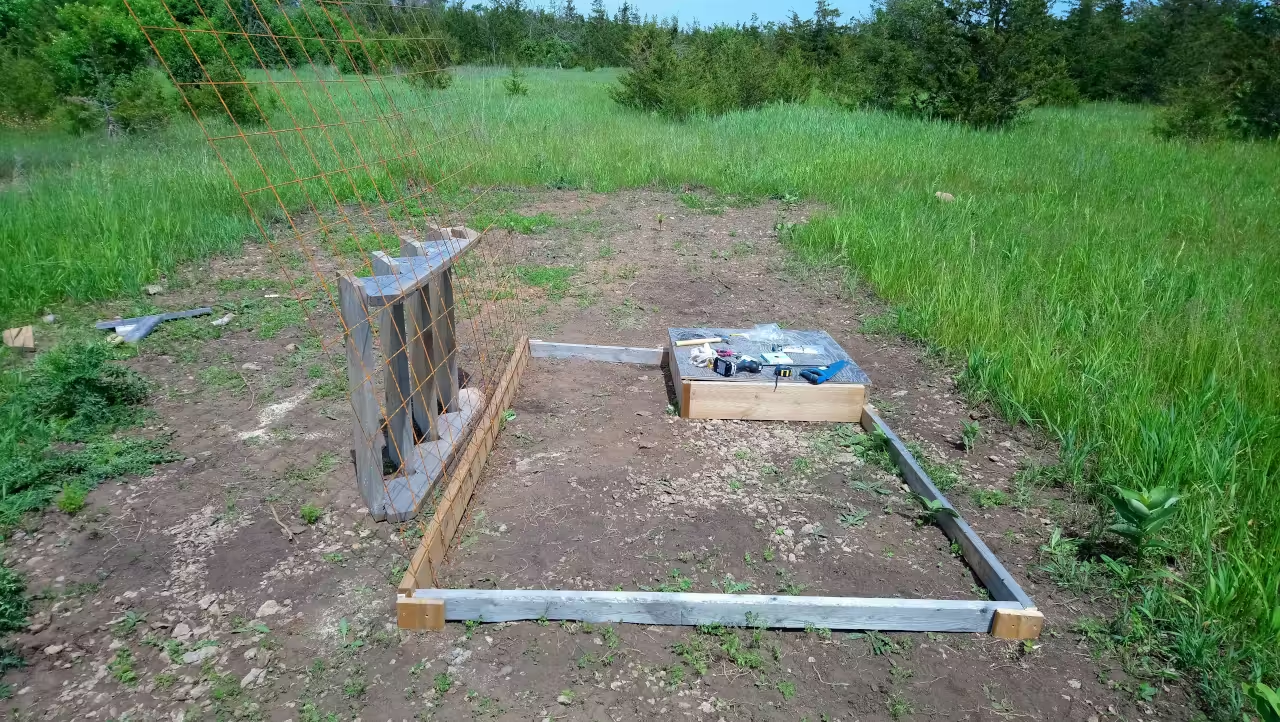
I used pressure treated wood to build the base.
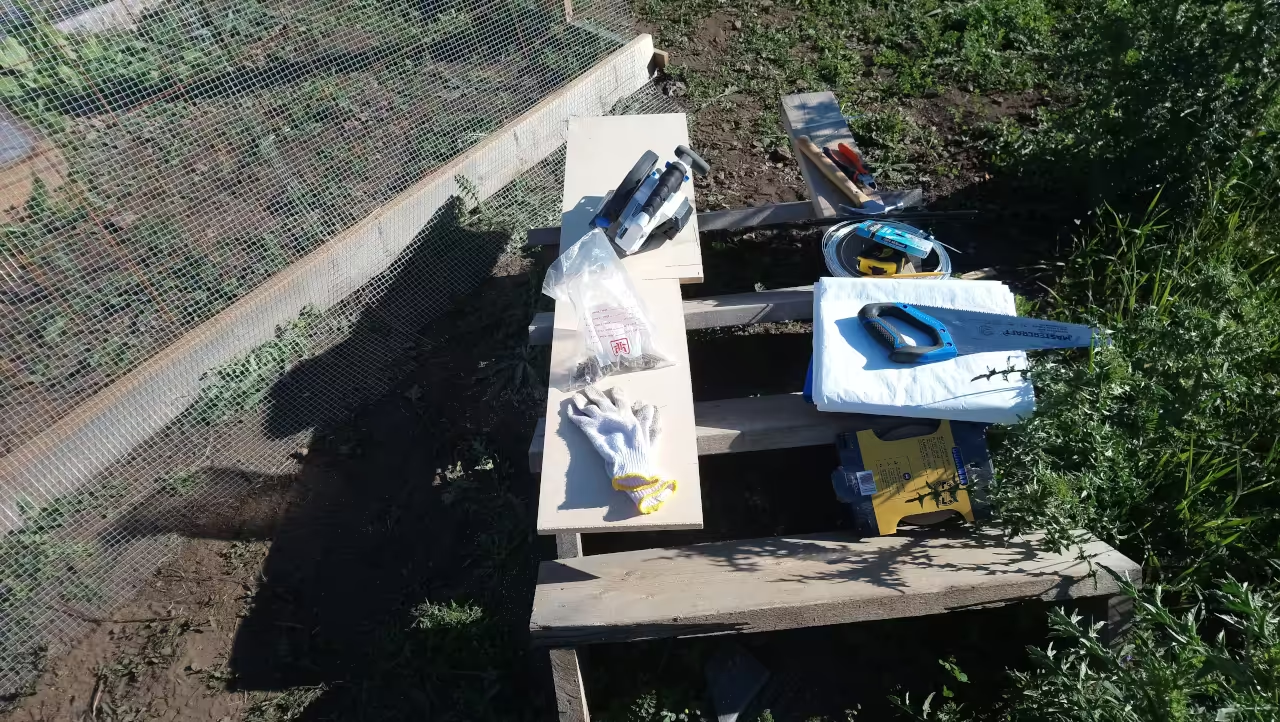
To use less wood, I used a construction platform as a base for the chicken coop portion.
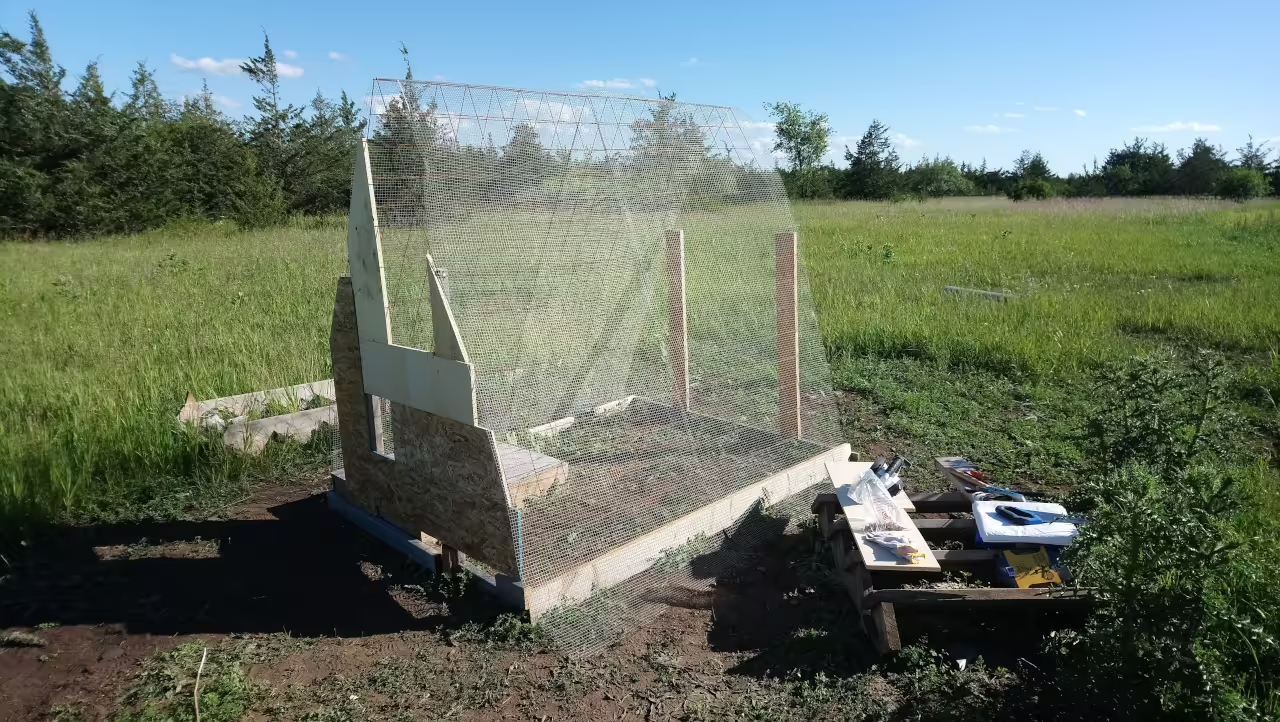
Next I placed the construction mesh in place.
Used up all plywood from indoor projects for the back of the hoop coop.
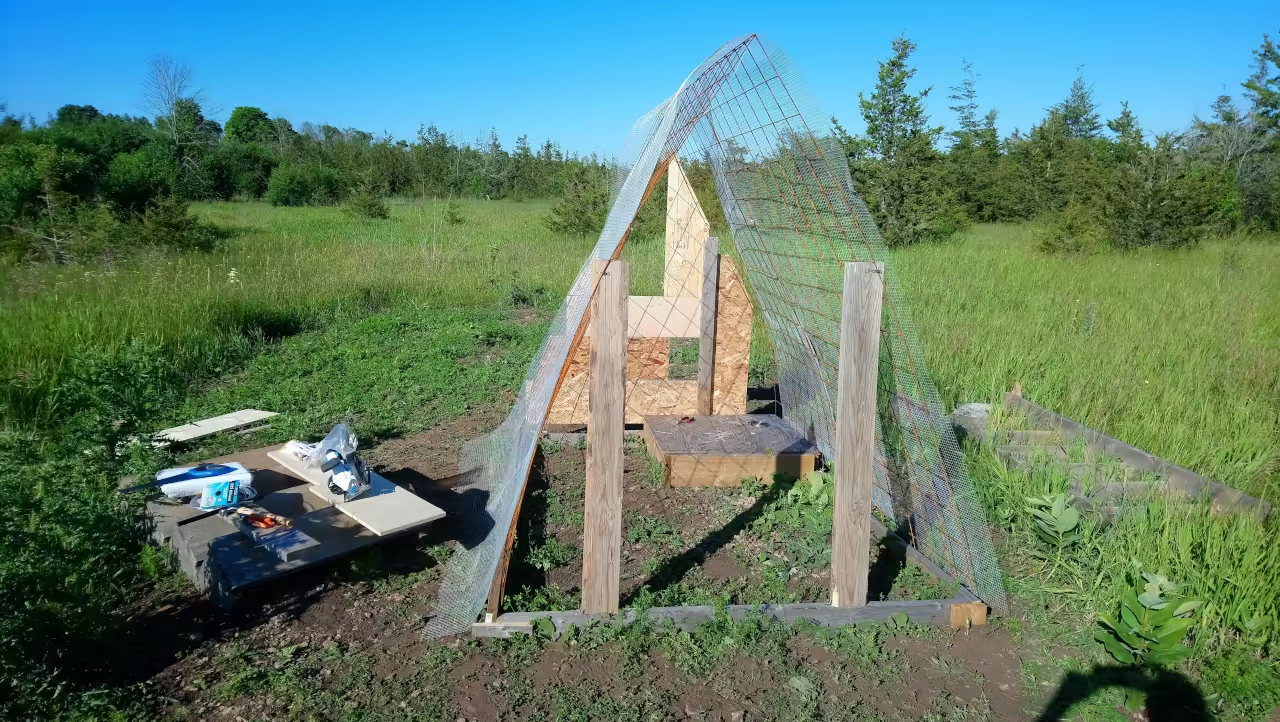
Used a full 4×8 plywood that had been outside for 2 years to build a large nesting box. Their feed, shavings, hay, cleaning supplies are kept on top of the large nesting box. I just bring them water daily.
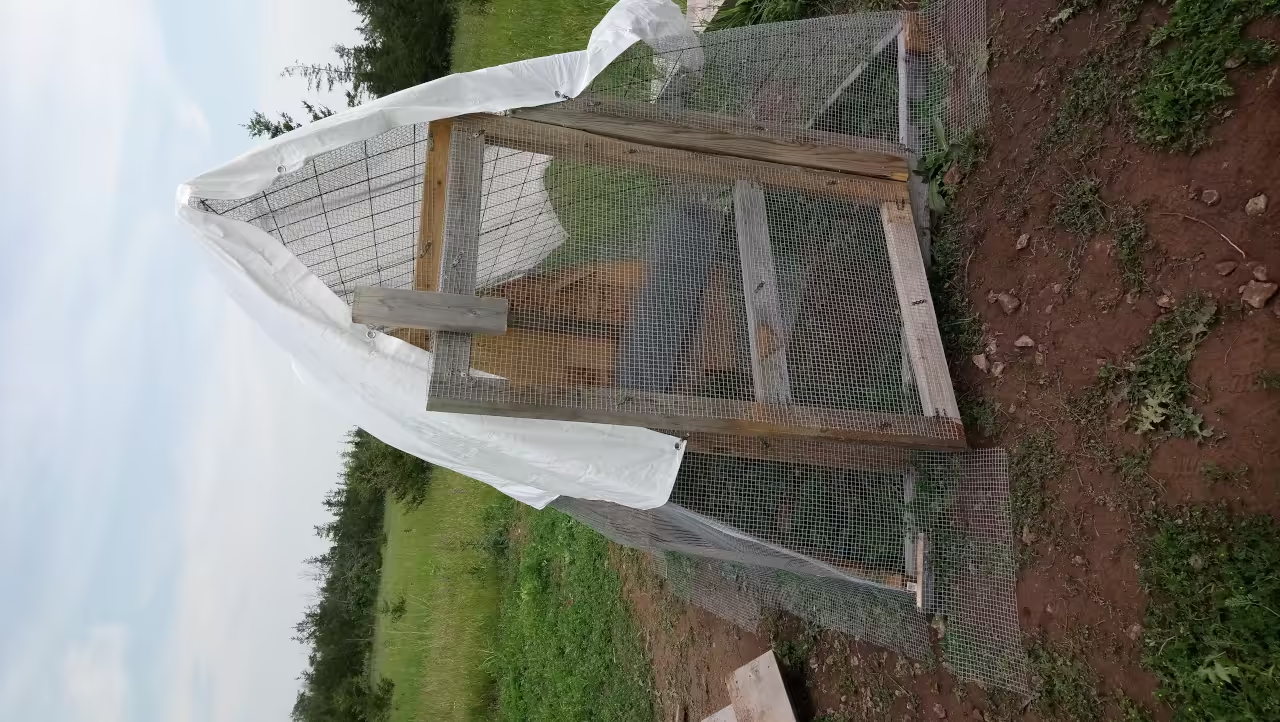
Built a door frame.
Built a door larger than the door frame so that it cannot be used by a predator to push into the coop. The door hingles smaller than desired, so installing them closer to the outer edge made the door stronger.
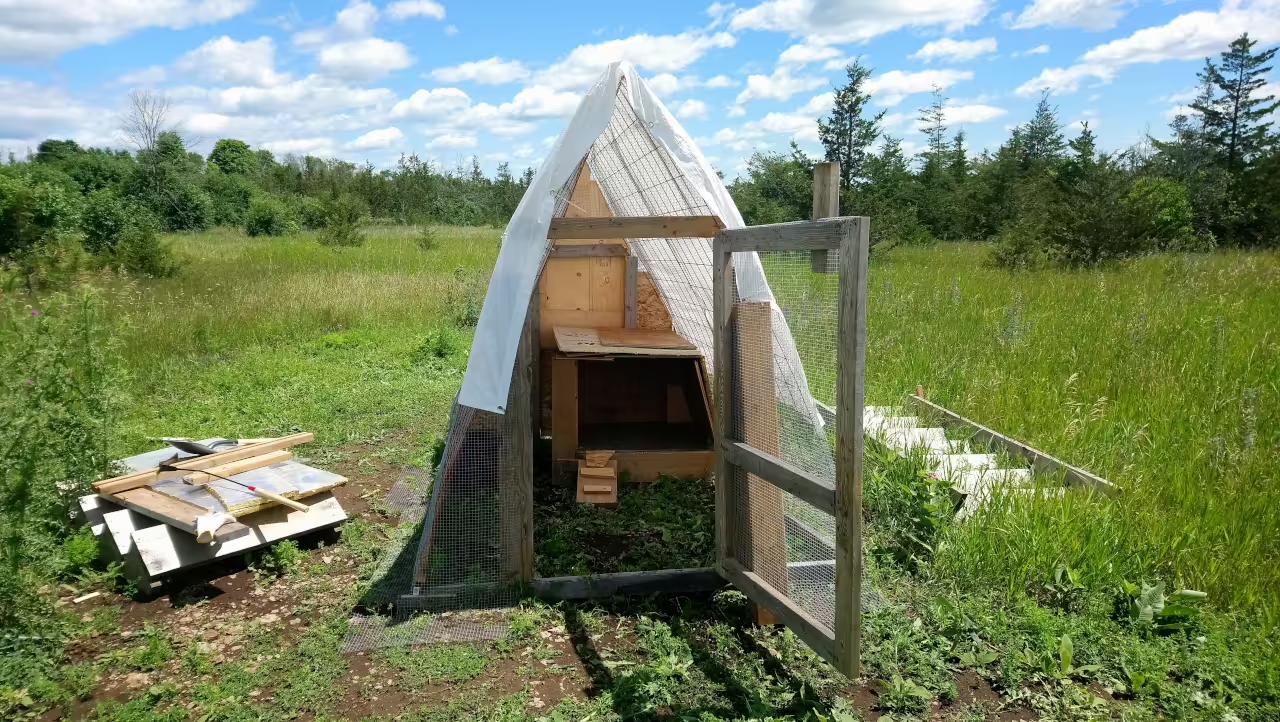
Metal cloth was used to cover the entire hoop coop except the bottom.
One plastic tarp was placed on top of the structure.
Since there is no soil, I did not have to worry about predators digging underneath to get inside. I dug a mort so that I could have some cover for the metal cloth.
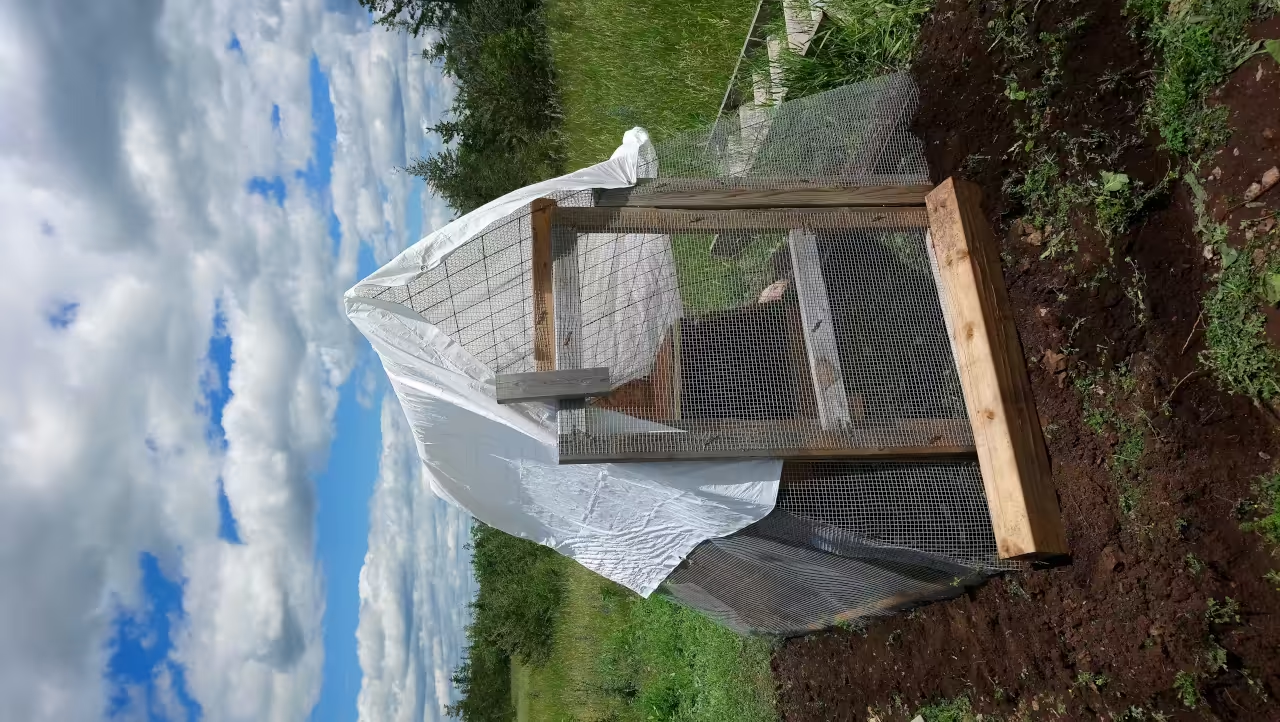
I originally used a wood piece with a very long screw as a lock. The lock mechanism was replaced with a metal push lock.
After a few months, canvas cloth was placed over the plastic tarp.
3.5 week baby chicks moved in and have survived severe wind, and winter weather.
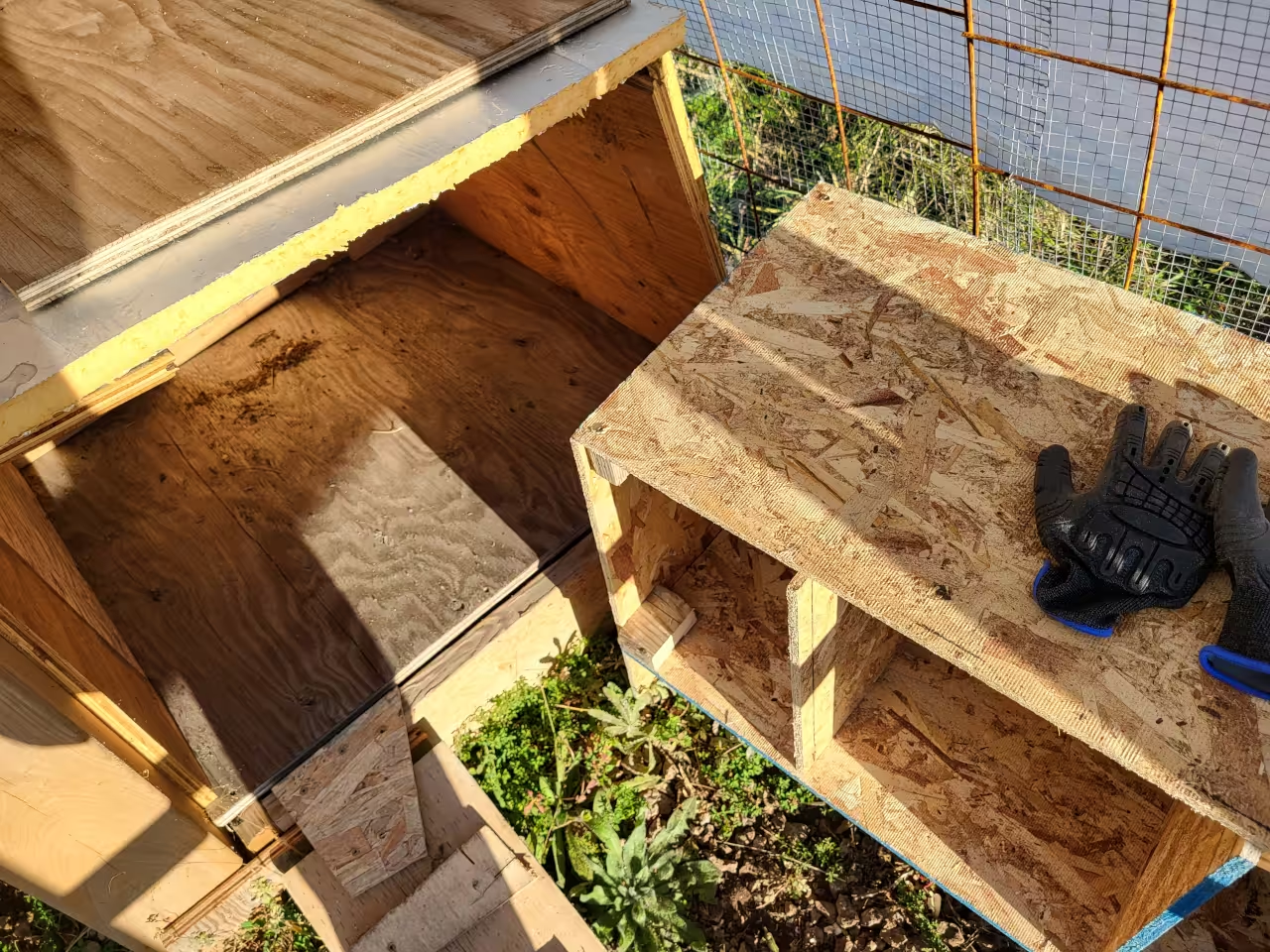
Before the baby chicks moved in, I build 4 nesting boxes from one sheet of plywood. Originally, the hoop coop was built for 4 chickens, but 9 out of 10 baby chicks survived and are doing well.

I found a clear shower curtain that was discarded on the side of the road. THe curtain was used to cover the front of the hoop coop.
For winter, I placed a piece on insulation on the side of the door to prevent the waterer from freezing. The insulation can easily be removed when the weather is warmer.
Wild dogs, coyotes and bears have passed by without incident.
Conclusion:
A hoop coop can be built using available tools and scrap material to lower construction costs. My build was based on 4 chickens having enough space to maneuver if I am not able to let them out to free range on the pasture. Since I have 9 chickens, I had to add 4 more nesting boxes for the chickens. I keep their feed, bedding and cleaning supplies inside the hoop coop.
The hoop coop has withstood heavy rain, strong winds, heavy snow and has not been attacked by predators such as hawks, crows, wild dogs and bears. Even pests such as hedgehog and deer have not disturbed the hoop coop.
If you enjoy this article, consider supporting me by purchasing one of my OjamboShop.com Online Programming Courses or publications at Edward Ojambo Programming Books
References:
- Learning JavaScript Course on OjamboShop.com
- Learning Python Course on OjamboShop.com
- Learning PHP Course on OjamboShop.com
- Learning JavaScript Paperback on Amazon
- Learning JavaScript Ebook on Amazon
- Learning Python Ebook on Amazon
- Learning PHP Ebook on Amazon
- OjamboServices.com For Custom Websites, Applications & Tutorials
Disclosure: Some of the links above are referral (affiliate) links. I may earn a commission if you purchase through them - at no extra cost to you.